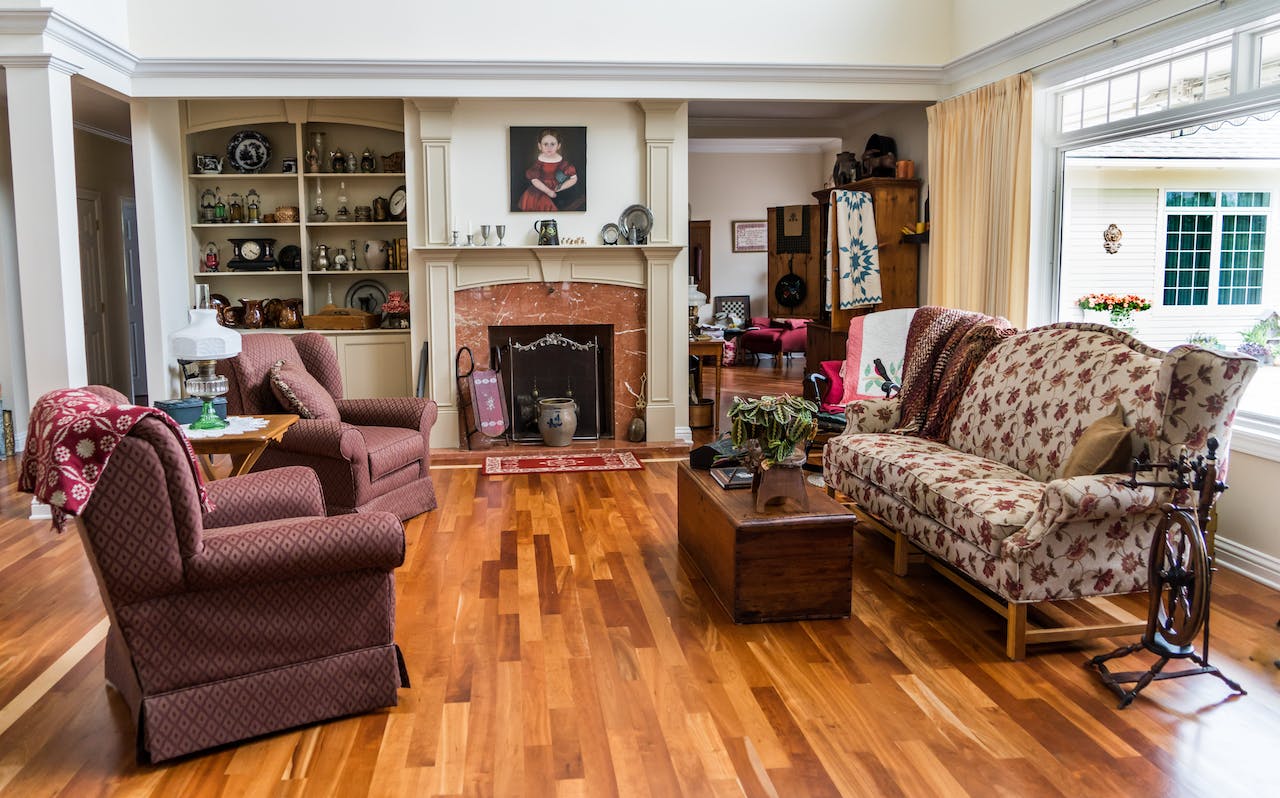What are some of the most common wood stains that you normally come across? You may say rich mahogany or light blonde. But how do you pick paint colors that complement these wood stains? According to interior designers, neutral hues play a crucial role in the color scheme of your rooms. That means the paint colors of wall décor and upholstered furniture should enhance the wood’s beauty and not clash with it.
If you are looking for the best flooring service contact the British Flooring now for best service.
Wondering how you will choose paint colors for your rooms that would complement the wood stains? Here are a few tips from interior designers that you can follow:
1. Determine the type of your wood floor stain
It is essential to know the undertone of your floor before choosing a paint color. Is your wood floor stain cool or warm? If you don’t have the answer, it may become difficult to choose the right paint color. Warm floors, for example, have an orange, red, or yellow undertone. This means you need to select a slightly darker paint color. Cool stains, on the other hand, have taupe or gray undertones. This means you need to select a comparatively lighter paint color.
Some homeowners may think that warm undertones mean they need to select a darker shade of blue, green, or brown. That’s not the case at all. Colors like peach, coral, salmon, or soft cream complement warm wood stain perfectly. Just be sure to pick out colors that have a slightly yellowish tinge in them. Alternatively, you can also choose warm amber colors, rich auburns, or authentic browns to complement warm wood stains.
2. Decide the look and feel you want to achieve
The rule here is to complement the undertone of your wood stain. That doesn’t necessarily mean you should select paint colors that match the color of your floor. You may want to go for contrasting colors also. This usually boils down to one thing: how do you want your house to look? Suppose you want to make it look antique. Then you should go for warmer colors with a hint of yellow and brown.
But what if you want to break the monotony? You can choose contrasting colors that make your floor stand out. This means you can go for white walls if you have dark ebony floors, thus creating a contrasting effect. In fact, it would also make your furniture the center of attention in the room. On the other hand, if you want to create a warm, cozy feeling in your house, you can select colors like warm cream or coral that provides a luxe effect with rich mahogany floors.
3. Keep your home’s architectural style in mind
Your home’s architectural style can help to pick the appropriate paint color by keeping the wood stain in mind. If you want a Spanish Colonial Revival-style home, then make sure you choose floors with warm undertones and match it with yellowish or brownish paint tones. Try to keep the paint color slightly lighter than the wood undertone so that it creates a cozy feeling.
Does that mean you can’t give a contemporary look to your house if it has warm wood stains? Yes, you can. Suppose the wood gives a dark and heavy feeling and you don’t want to use warm paint colors. Go for cool paint colors like all white or cabbage white. This goes well for floors with cool undertones also. Lighter floors bounce light from its surface and make the room brighter.
4. Compare and choose from complementary colors
While color preferences are completely personal, you should keep a few combinations in mind so that your furniture doesn’t seem lost in the color frenzy. The idea is to choose paint colors according to wood stains that make every item in the room pop out. Here are a few combinations that you can try:
• Pine wood and green – It brings out the warmth of honey-toned pine because of the light-colored green in the background.
• Natural wood and yellow – Choosing sunny shades of yellow create a casual and inviting look on natural wood stains.
• Orange toned-wood and blue – These are entirely different colors but still complement each other because of their contrast. Intense blue highlights the orange tone in wood, giving a bold effect to your room.
It may not be a big deal to choose paint colors according to wood stains, but small things may make massive differences in how your house looks. Keep the above rules and color combinations in mind to make your rooms look colorful.

